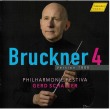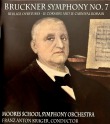Venegas Carro, Gabriel: The Bruckner Problem and the Study of Musical Form
| This study proposes an analytical methodology and theoretical framework that seeks to turn the textual multiplicity often associated with Bruckner’s large-scale works (a scholarly issue often referred to as the “Bruckner Problem”) into a Bruckner Potential. Because textual multiplicity does not sit comfortably with traditional notions of authenticity and authorship, Bruckner scholarship has operated under aesthetic premises that fail to acknowledge textual multiplicity as a basic trait of his oeuvre. The present study circumvents this shortcoming by conceiving formal-expressive meaning in Bruckner’s symphonies as growing out of a two-dimensional dialogue comprising 1) an outward dialogue, characterized by the interplay between a given version of a Bruckner symphony and its implied genre (in this case, sonata form); and 2) an inward dialogue, characterized by the interplay among the various individualized realizations of a single Bruckner symphony. The analytical method is exemplified through a brief comparison of two renditions of the slow movement of Bruckner’s First Symphony, WAB 101 and a detailed consideration of each of the surviving realizations of the slow movement of his Third Symphony, WAB 103. |








